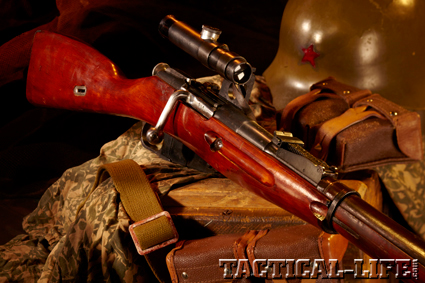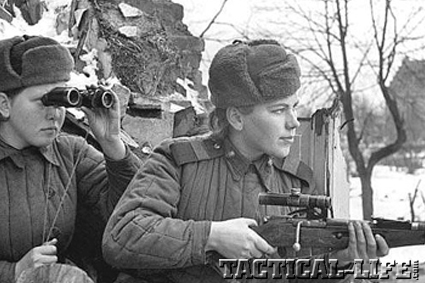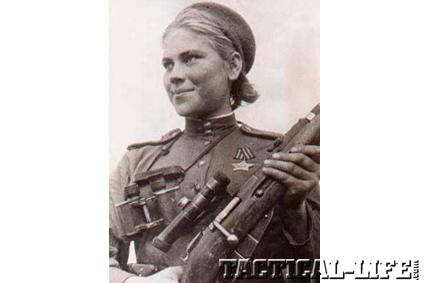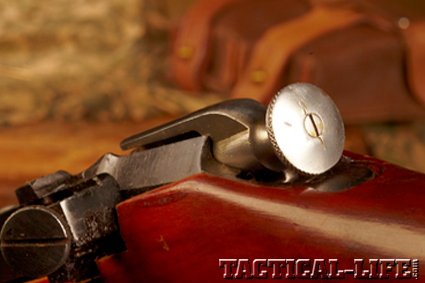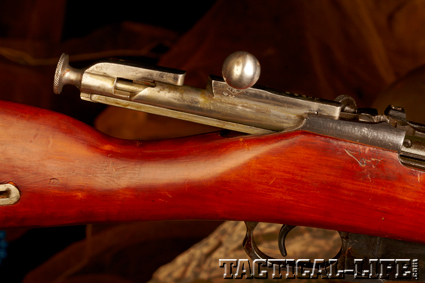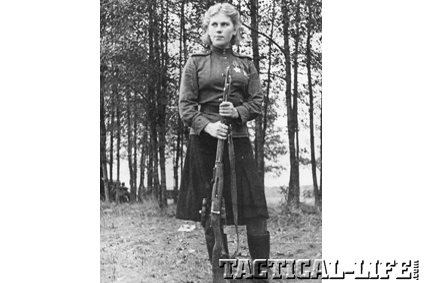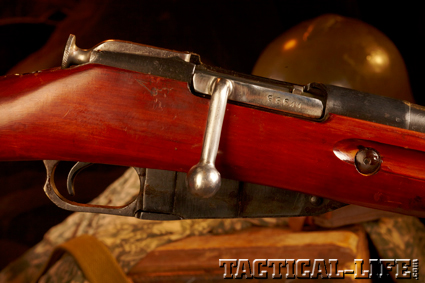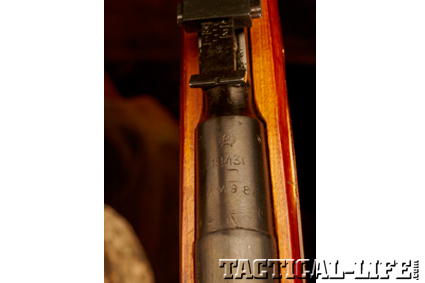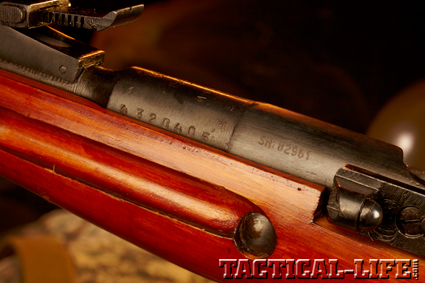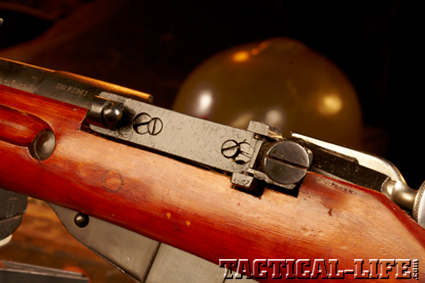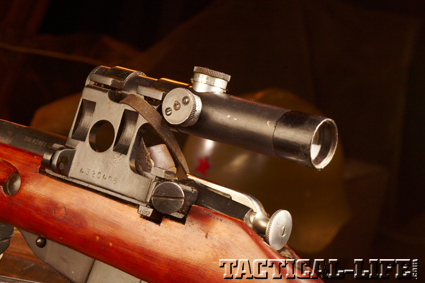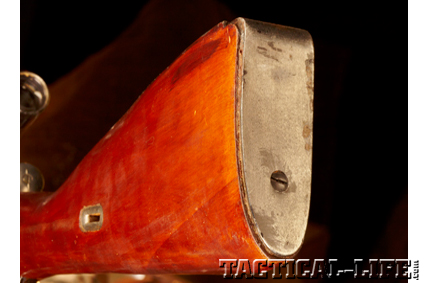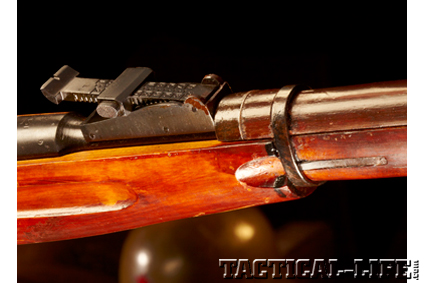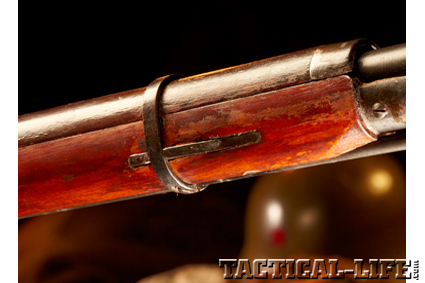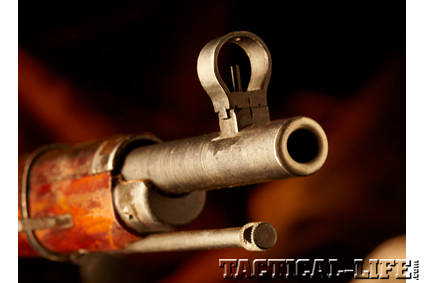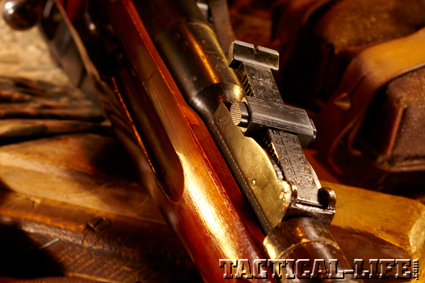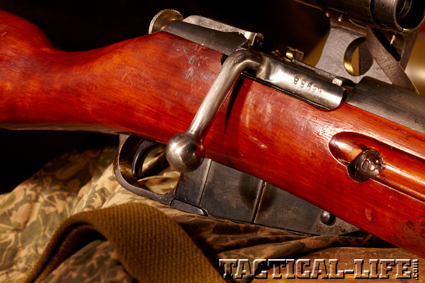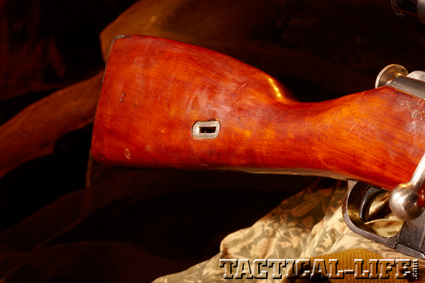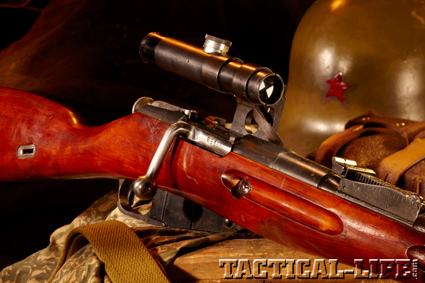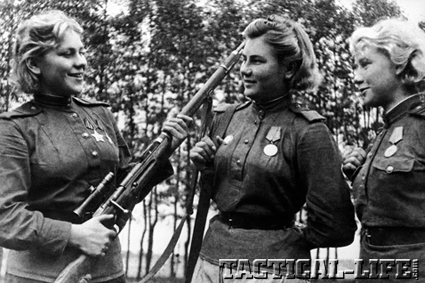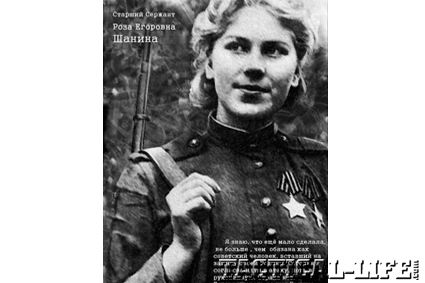World War II was at its core an existential threat for the Soviet Union. Invaded by Germany, the Soviets were faced with a highly capable and determined foe. Making things worse, Soviet troops in the early part of the war were chronically short of both weapons and supplies. However, to effectively combat the invaders, Russia worked diligently to produce enough arms for its military. In addition to basic infantry rifles, the Soviets realized that more specialized weapon systems were also needed. These included not only handguns and submachine guns, but also rugged and capable sniper rifles.
The exact origin of the Russian sniper program is a bit sketchy, but sources place it between 1928 and 1930, which roughly coincides with the consolidation of the time’s three main battle rifles (Infantry, Dragoon and Cossack) into the modified Model 91/30. The basic 8.8-pound rifle, first developed by Captain Sergei Ivanovich Mosin and Belgian designer Leon Nagant in 1891, was redesigned in 1930 as the Model 91/30. It featured a strong, short-handled, bolt-operated action with two front locking lugs; an integral, five-round magazine; a 29-inch barrel; a tangent rear and hooded-post front sight regulated to 2,000 meters; a long, full-length wood stock with an upper handguard and sling slots cut through the wood; an under-barrel cleaning rod; an awkward (but very positive) “knob” safety; and a long, cruciform, spike bayonet with a flattened “screwdriver” tip.
The Model 91/30 was never considered elegant or svelte, and the quality of its machining, fit and finish was never on par with its German, British and American contemporaries on the battlefields. But, the Mosin proved to be a rugged design that could—and did—handle the worst combat conditions a Russian winter could throw at it as well as any other bolt action fielded by any military force of its day, and its simple manual of arms was well suited to the typical Russian soldier of the era. In service from 1891 till the late 1970s in some areas, the 91/30 was manufactured both in Russia and abroad and issued by more than one nation in more than one war. It’s one of the longest-lived active-duty military rifles in history.
Advertisement — Continue Reading Below
All In The Scope
While there were attempts to extend the practical range of the Model 1891 in the 1920s, with the emergence of the 91/30, the Soviets stepped up their sniper program, initially buying optics from the well-known German Zeiss firm. The first general-issue Russian-made scope used on the relatively new 91/30s was the PE (Unified Model, based on the Zeiss optic) from about 1931 to about 1939, with some production from existing parts continuing into the early 1940s. The 4x PE initially used a centerline mount on the bore, which was later changed to a side mount, and featured windage and elevation adjustments along with a focus ring. The PE was superseded by the 4x PEM (Unified Model Modern, without a focus ring) to simplify production and reduce the tendency of the PE to “leak,” or fog up, in the field. The PEM was manufactured roughly from 1937 to 1942, when the fixed-focus 3.5x PU was introduced to replace it.
The Mosin PU sniper rifle was built by two primary Russian arsenals, Tula and Izhevsk, and most true World War II–era PU sniper rifles were turned out from 1942 to 1944. Those from Tula were stamped CH (or CU) on their barrels along with Tula’s standard Mosin markings to designate them as specially built snipers. Izhevsk didn’t add any additional “sniper grade” markings on its PU rifles. Both companies chose the best production samples for PU builds, with better triggers and a longer bolt handle bent down to clear the scope because the Mosin’s standard short, straight bolt couldn’t be manipulated fully with glass mounted. The 3.5x PU scope itself was developed with less-tendency to fog and for more convenient mass production, and from its inception used the side mount on a base attached to the left side of the receiver. That mount allowed both good access for single-round loading through the top of the receiver and very quick use of the iron sights as backups for either rapid close-in shots or if the scope was damaged in battle. In keeping with Soviet traditions of “Fancy? Nyet; Works? Da,” the PU scopes used a combination of a relatively crude, mechanical, external elevation-adjustment method and finer internal turret adjustments for more precise final zeroing.
Coarse windage was set by machining or filing the scope mount to mate with the base closely enough to generally center the three-wire reticle in line with the bore. Then final windage was dialed in with the left-side drum. Coarse elevation was done by loosening and tightening two large screws at the rear of the mount: Loosen the top, and tighten the bottom to move the rear of the mount up; reverse to move the rear of the mount down; and once the setting is determined, those two screws are tightened securely, the large knurled lockdown clamp screw is cinched down tight, and final minute adjustments are dialed in with the top drum. The windage drum is marked in increments of +10 (right) and -10 (left), and the elevation drum is graduated from 0 to 1,300 meters.
Advertisement — Continue Reading Below
Because the fit between the mount and base were critical to correctly zeroing the rifles, it was important to make sure the rifle, scope and mount all stayed together during any wartime servicing or any of what could be several postwar refurbishments. It’s common to see a second serial number stamped on the barrel shank of a genuine PU sniper that matches the serial number of its correct (or at least most recent) scope. Since most Mosins, standard or sniper, were refurbished after WWII then mothballed, it’s fairly rare to see a true PU today that is still mounted with its originally issued scope. Many will have a different scope that was attached during a later arsenal refurbishment, with the original scope’s serial removed from the barrel or crossed out with the new scope’s serial stamped in the same spot. These are still legitimate Mosin snipers.
Legitimate PU
Unfortunately, there are many fakes on the market built from standard Mosins using more recent reproduction scopes that mimic period markings. But if a given PU has a stamped secondary serial that matches the one on the scope, and both scope and rifle serials are stamped or electro-penciled on the scope mount, chances are good that the combination was a genuine arsenal sniper refurbishment and not a fake or replica. Additional indicators that the scope, at least, is true to the mount (and probably legitimate surplus) are relatively rough machining on the mount (as opposed to a cast version), signs of wear on the optic, and the witness marks (one single stamped line on one of the rings that extends across onto the scope tube to show where they should be positioned together if either are separated temporarily). And while the replica scopes may have markings and years that look appropriate, if they appear too new, they’re probably not genuine. Most PU optics were refurbished after WWII, just like the rifles, but for function, not necessarily appearance. Because of the work required to match bases to mounts to scopes, the individual sniper was strongly discouraged from separating any of them themselves for any reason, including for cleaning.
There were several Russian makers who produced military scopes in the 1930s and 1940s, and surplus 91/30 sniper rifles may have markings from any of those makers on their optics, including the year of issue stamped on the scope’s tube body. Where the year is not stamped separately, the first two numbers of the serial will most likely be the year it was made. Other markings on genuine PU scopes may include a box with an “X” inside, a box without an “X”, a box with an angled slash, and/or a more recent year partially or fully stamped, any of which indicates the unit was rebuilt sometime after WWII. Configuration and operation on models throughout the makers were standardized. If you knew how to use one PU scope, you knew how to use them all. The PU was the culmination of the bolt-action Soviet sniper rifle till the advent of the semi-automatic Dragunov accepted for general service in 1963, and it’s the version most commonly found today.
Advertisement — Continue Reading Below
Expectations
Each Mosin, sniper or regular infantry, was required to be zeroed (or “confirmed”) on assignment to a unit. Where possible, it was done under ideal lighting and wind conditions and by firing prone with iron sights (with the rear set at 3) at a black rectangle 20 centimeters wide by 30 centimeters tall set at 100 meters. The weapons technician (armorer) present could make minor adjustments as necessary, while more extreme corrections or repairs were sent up the line to a more advanced facility. Once the rifle was capable of putting four holes in an 8-centimeter circle correctly positioned, the infantry rifle was good to go. The sniper rifle was taken a step further and fired from the same distance with the elevation turret set on 3 and the windage turret on 0. The zeroing process from that point on gets a shade more involved with scope adjustments, but once the rifle was correctly set up, the sniper was expected to be able to put 10 rounds of service ammunition into 1.38 inches at 100 meters, 2.96 inches at 200 meters, 7.09 inches at 400 meters, and 13.79 inches at 600 meters.
The European-style reticle uses a single pointed-tip lower post between two horizontal sidebars. The sniper was trained to use that reticle image in estimating target distances, based on known sizes relative to the distance between the two horizontal bar ends in the center of the scope’s image, the distance between the tip of the vertical post to the end of a bar on either side, the thickness of the horizontal bar, and so on. For example, if a man-sized target appeared twice as tall as the horizontal bar was thick, that indicated one distance. If the target was two-thirds taller than the bar was thick, that indicated another distance, and if the target was the same height as the bar was thick, the sniper knew what adjustment to make in his turret elevation to get the hit. Then, as now, range estimation was critical for the sniper, and the Russian sharpshooter was very well trained in it.
An experienced sniper was expected to be able to proficiently make hits at least out to 600 meters. In actual practice, most were probably closer to 400, but there were confirmed kills well beyond that 600-meter figure. Despite employing what we might consider relatively primitive technology now, the Soviet sniper was a highly competent and sophisticated sniping machine with his, or her, PU Mosin.
Advertisement — Continue Reading Below
Different Breed
In use, the Mosin PU sniper rifle’s scope was extremely effective in the right hands, but quite different from what we’re used to today. The reticle’s vertical center-post requires more concentration to keep the tip placed precisely on target for best accuracy through a long and heavy trigger pull than does a modern crosshair-style mounted on a rifle with a much better trigger. For accuracy, I shot a sample 1943 Izhevsk PU from Mitchell’s Mausers with a 1944 Kazan/KOMZ optic, which matched the secondary serial stamped on the barrel shank, at 100 yards. In a genuine PU scope, the entire reticle moves visibly inside the eyepiece as the drums are turned, and there was a notable difference in point of impact between the three loads tested. The trigger pull itself was a consistent 6 pounds, a half-pound lighter than a standard 1943 Izhevsk infantry rifle I had on hand. Once dialed in, the sniper rifle held a best 100-yard three-shot group of 1.31 inches with the Hornady 174-grain Vintage Match loads. A genuine Mosin PU is an important historical artifact in the world of classic military weaponry, and a study in itself. For more on Mitchell’s Mausers Mosin-Nagant, visit mauser.org or call 800-274-4124.
